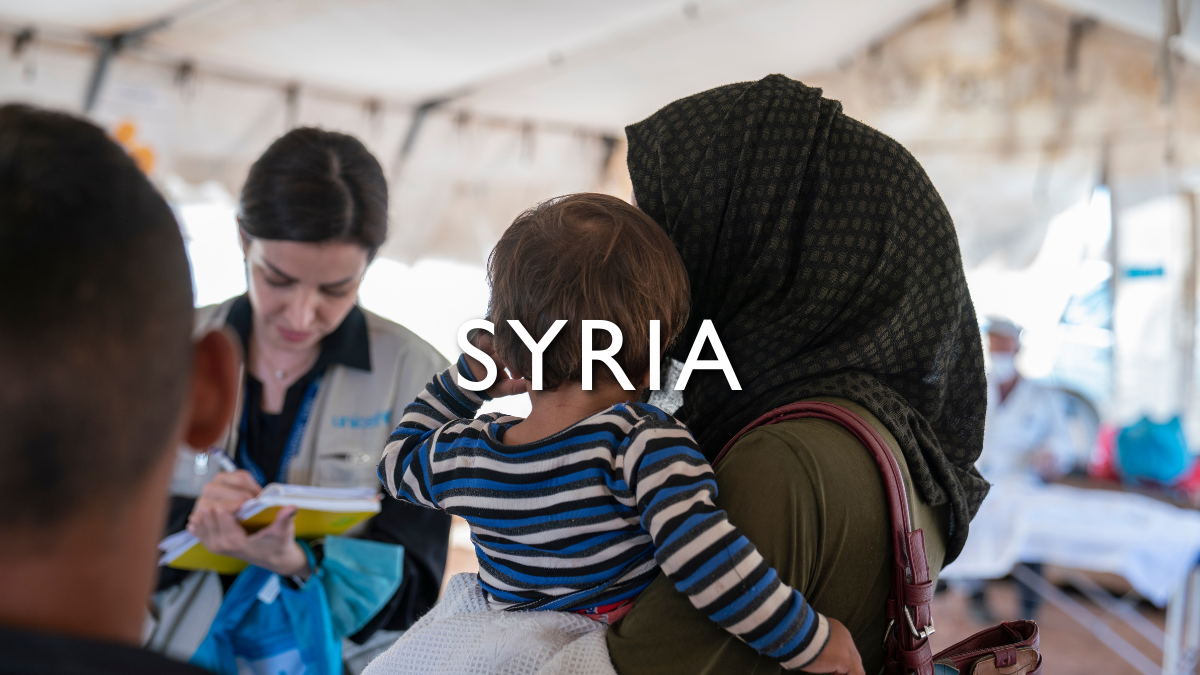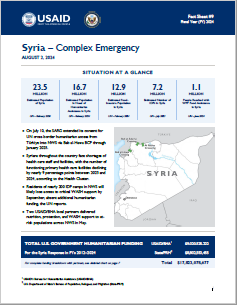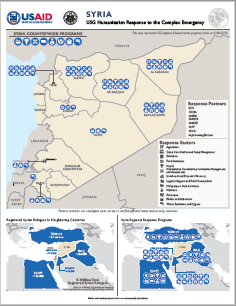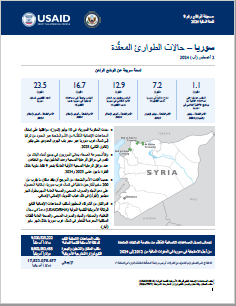
The Syrian conflict is one of the world’s largest and most complex humanitarian crises, driving record levels of displacement and humanitarian need. The UN estimates 16.7 million people—more than 70 percent of Syria’s population—are in need of humanitarian assistance. Notably, nearly 50 percent of the population in need are children. Protracted conflict has damaged or destroyed much of the country’s infrastructure, severely limiting households’ ability to access basic services. Socioeconomic deterioration and the lasting effects of the February 2023 earthquakes have also exacerbated humanitarian needs, with an estimated 12.9 million people considered food insecure countrywide. The U.S. Government (USG) estimates that the complex emergency has resulted in the deaths of more than 500,000 people and the displacement of more than one-half the population, both internally and across international borders, since the Syrian conflict began in 2011.
The USG is the leading donor of humanitarian assistance for Syria, providing more than $17 billion—including more than $9 billion from USAID—throughout Syria and the region since 2011. This total includes approximately $251 million—of which USAID provided approximately $170 million—in response to the February 2023 earthquakes. With USAID support, humanitarian partners are providing emergency food and nutrition assistance; health care services; protection support; safe drinking water; shelter materials; and basic household items such as blankets, clothes, and kitchen sets to populations in need across Syria.



